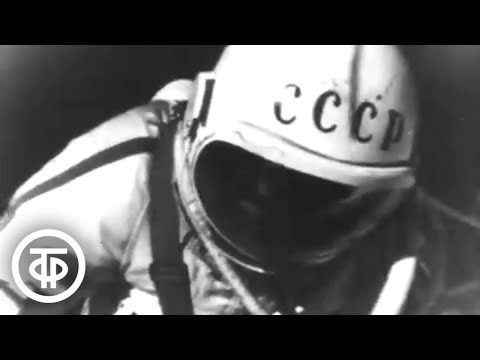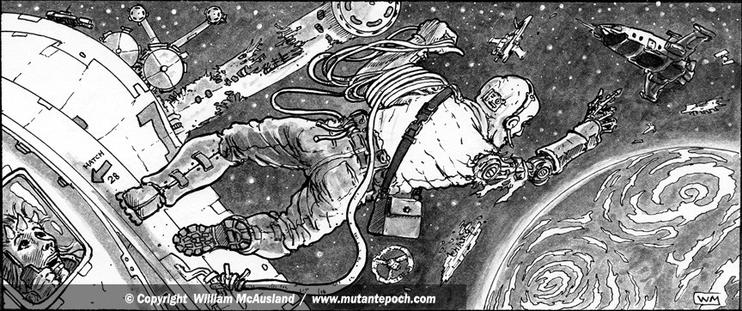In 1984, astronaut #DaleGardner performed a #spacewalk without physical contact with the ship to capture the Westar VI satellite https://en.wikipedia.org/wiki/Westar
Recent searches
Search options
#spacewalk
NASA Astronaut Sunita Williams Return to Earth After Nine Months in Space
https://techrefreshing.com/nasa-astronaut-sunita-williams-return-to-earth/
#SunitaWilliams #NASA #SpaceX #Astronaut #ISSMission #SpaceExploration #NASAUpdates #BoeingStarliner #Spacewalk #TechNews #sunitawilliamsreturn #Astronomy #WomenInSTEM #BreakingNews
60 years ago, Alexei #Leonov performed the first-ever #spacewalk. Everyone knows #MichaelJackson’s #moonwalk, but the #Russian walk in #space was the real anti-gravity move!
#Russia #History #OTD
https://en.wikipedia.org/wiki/Alexei_Leonov
https://www.firstpost.com/explainers/history-today-when-alexei-leonov-became-the-first-man-to-walk-in-space-13871275.html
https://www.space.com/alexei-leonov-bio.html
#OnThisDay Anniversary of the first #Spacewalk (1965) by Russian #Astronaut Alexei Leonov.
Birth Anniversary of former South African President F. W. de Klerk (1936). He worked with Nelson Mandela to dismantle the apartheid system and introduced universal suffrage.
https://knowledgezone.co.in/news
18 марта 1965 года Алексей #Леонов вышел в открытый космос. Причём сделал он это уже на втором витке
In 2007, the Panoramic Survey Telescope And Rapid Response System (Pan-STARRS) began taking pictures of the night sky with the largest digital camera that had ever been built. 166 4k monitors worth of pixels per snapshot. The system was designed to gaze deep and wide to catch any signs of motion from asteroids zipping through the solar system. This setup also made it great at picking out manmade satellites. The US Air Force was interested enough in this prospect to fund most of the construction of Pan-STARRS, but with some strings attached. The images had to be passed through a processing pipeline that redacted sections of pixels where satellite trails were found. The Air Force’s heavy-handed algorithm left scientists with data full of crisscrossed swaths of dead space. I spoke with Gene Magnier, the lead of the data analysis system, and he mentioned some cases where up to 50% of the image would be lost to censoring, far worse than they had expected. Changes in funding and the persistent complaints from astronomers eventually put an end to the censoring, but Gene estimates that the project lost about a year of productivity.
I had heard this story but had never seen what the censored images looked like. All of the Pan-STARRS data was eventually reprocessed so you won’t find the censored images in the database today. Gene couldn’t find any examples himself but described what to look for. I eventually wiggled my way into a supernova detection catalog with Pan-STARRS data that Gene confirmed to contain censor lines. I hope these 100x100 cutouts you see here aren’t all we have left of this fascinating moment in the history of space imaging. If anyone has some Pan-STARRS data of a pre-2011 vintage, let me know.
#spacewalk #screenshotphotography #newmediaart #nasa #spaceart #deepfield #panstarrs
Did you know that?
───── ⋆⋅☆⋅⋆ ─────
#space #moon #mars #nasa #aerospace #astronaut #astronauta #cosmonaut #spacewalk #spacesuit #rocket #rocketscience #spacetravel #spaceflight
NASA edition
───── ⋆⋅☆⋅⋆ ─────
#space #moon #mars #nasa #aerospace #astronaut #astronauta #cosmonaut #spacewalk #spacesuit #rocket #rocketscience #spacetravel #spaceflight
'Stranded' #NASA astronaut Sunita Williams takes 'Ultimate selfie' on #spacewalk https://zorz.it/gebql | #PesalaBandara #SunitaWilliams #astronaut #ISS #InternationalSpaceStation #selfie #space #spacecraft
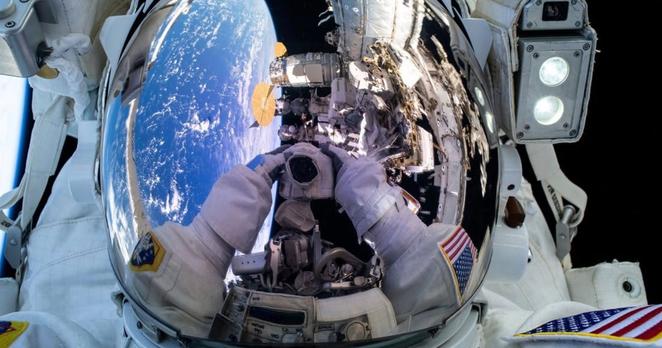
‘Stranded’ NASA Astronaut Sunita Williams Takes ‘Ultimate Selfie’ on Spacewalk https://petapixel.com/2025/02/06/stranded-nasa-astronaut-sunita-williams-takes-ultimate-selfie-on-spacewalk/ #astronaut #spacewalk #selfie #Space #NASA #iss

My crew and I used a spinning machine to simulate the lunar gravity to study the growth of the sprouts in that condition!
#space #nasa #aerospace #astronaut #astronauta #rocket #rocketscience #spacetravel #spaceflight #spacewalk #analogastronaut #analogmission
#space #nasa #aerospace #astronaut #astronauta #rocket #rocketscience #spacetravel #spaceflight #spacewalk #analogastronaut #analogmission
Spacewalkers Complete Radio Hardware Removal and Microbe Search https://blogs.nasa.gov/spacestation/2025/01/30/spacewalkers-complete-radio-hardware-removal-and-microbe-search/ #japanaerospaceexplorationagency #internationalspacestation #canadianspaceagency #europeanspaceagency #expedition72 #roscosmos #spacewalk #jaxa #nasa
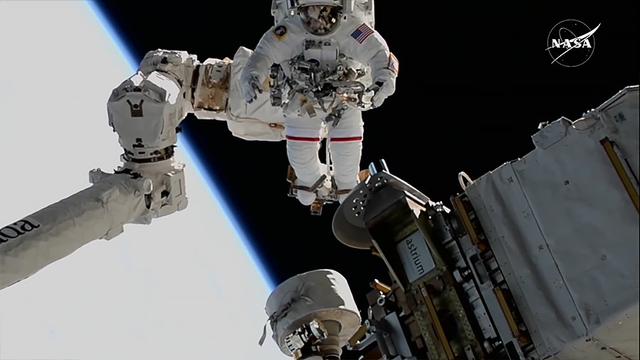
My name is Benedetta (Benny) and I am Italian.
I am a science communicator and an Analog Astronaut.
My goal is to become the next Italian woman to fly to space!
I am a citizen scientist for NASA and also an asteroid huntress
#space #moon #mars #nasa #aerospace #astronaut #astronauta #cosmonaut #spacewalk #spacesuit #rocket #rocketscience #spacetravel #spaceflight
SciTech Chronicles. . . . . . . . . . . . . . . . . . . . .Jan 25, 2025
#OSC #flexible #BTP-Si4 #PNTB6-Cl #ductile #Caltrain #Regenerative #OCS #Renewable #AI #physics #engagement #motivation #tutors #Galilee #Coins #synagogue #Venice #ducats #NICER #spacewalk #patches #sunlight #interference
#NASA #spacewalk to swab #ISS for microbial life
Spacewalkers to collect samples from sites near life support system vents on the exterior of the ISS. Scientists will be able to determine if the ISS releases #microorganisms and assess whether any can survive in the harsh environment outside the outpost.
With Mars now a priority for crewed expeditions, minimizing human contamination on the surface is crucial to avoid misidentifying it as traces of life on the red planet.
https://www.theregister.com/2025/01/22/nasa_spacewalkers_microbes/
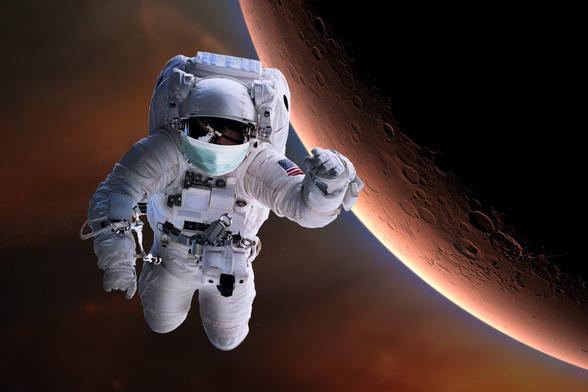
It's just crazy that we can view cameras in real time mounted in the point of view of two astronauts doing an EVA 420km above the Earth.
Space Force Android
These well built, advanced androids were used as security and boarding troops during operations aboard space stations and vessels, as well as deposited on the ground on moons, asteroid mines, and other planets such as Mars.
Ink illustration for page 44 of The Mutant Epoch RPGs Expansion Rules Book. Learn about this game book at https://www.outlandarts.com/expansionrules.htm or https://www.drivethrurpg.com/en/product/499645/the-mutant-epoch-rpg-expansion-rules
#spaceforce #military #spacer #astronaut #android #spacewalk#iss #spacedebris #spaceX #selfaware #ai #noai #noaiart #ink #rpg #ttrpg #scifi #playercharacter #mutantepoch #expansionrules #tme #themutantepoch #roleplayinggame #apocalyptic #postapocalyptic #outlandsystem #tabletoprpg like #gammaworld or #fallout or #mcc



